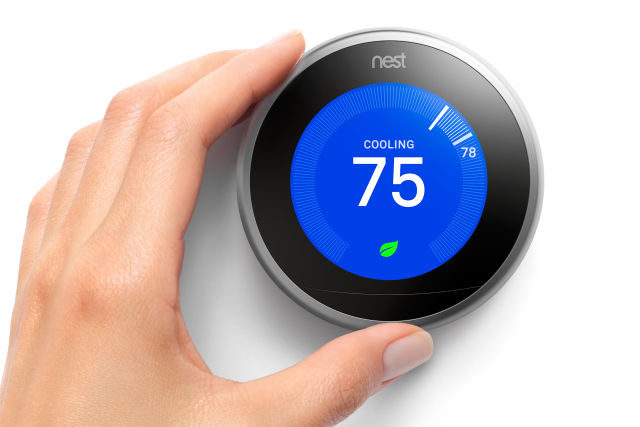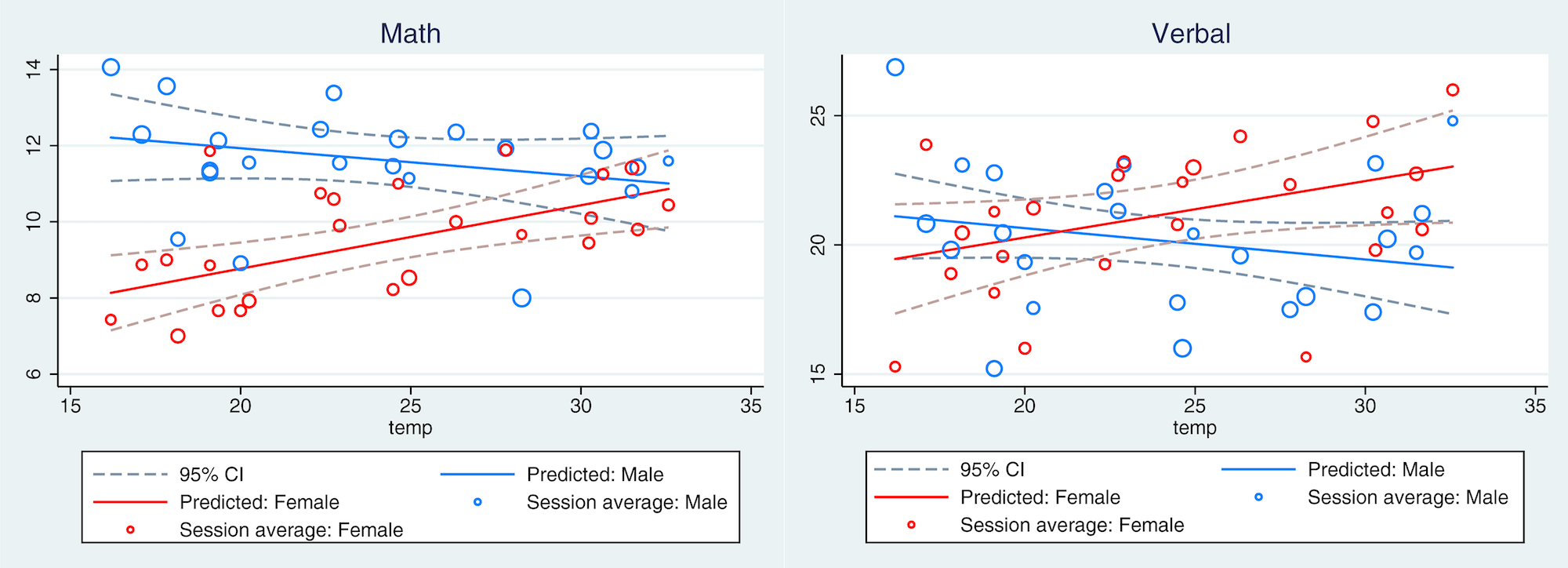
© Nest
As we move from a season marked by unstoppable heating units and into one dominated by aggressive air conditioning. Figuring out how to optimize the thermostat involves a balancing of individual comfort and energy efficiency.
But a new study suggests that there's an additional factor that should feed into decisions: the performance of any employees or students who happen to be subjected to the whims of whoever has access to the thermostat.Unexpectedly, the new results show that men and women don't respond to different temperatures in the same way. And, in doing so, they raise questions about just what we've been measuring when other studies have looked at gender-specific differences in performance.
You're making me cold!As someone whose mother admonished him to put on sweaters because my bare arms "made her cold," I'm well aware that there's a long-standing cliché about the sexes engaging in a battle of the thermostat. What I hadn't realized is that the existence of that battle is backed by data. Tom Chang and Agne Kajackaite are able to cite four references for the tendency of women to prefer their indoor environments warmer than men do. Chang and Kajackaite, however, found that the academic literature is silent on a related issue: do women have a good reason for wanting it warmer?
To find out, they devised three simple tests of mental performance. One was a simple math problem: add five two-digit numbers together. A verbal task was equally straightforward, with participants being asked to build as many words as possible from a list of 10 letters. Both tests were limited to five minutes, with the total of correct answers added to produce a score. The lack of penalty for wrong answers meant that providing answers quickly was an effective strategy.
The last test flipped this on its head by testing for the ability to slow down and reason through a problem. Participants were given a problem with wording that suggested an obvious-but-wrong answer. (For example, if the question mentioned a one-Euro price, the answer was almost certainly not one Euro.) And in this case, participants were just asked to solve three problems within their five minutes, allowing them enough time to exercise some intellectual control over whether to give an impulsive response.
Kajackaite then arranged for 543 college students in Berlin to take the three tests. And to examine the underlying hypothesis, the rooms that the tests were given in were set to different temperatures, anywhere from 16°C to 33°C (60-90°F). While 543 is a pretty good test population, remember that these were broken down into three different temperature ranges with males and females analyzed separately. That means there were fewer than 100 people in each population group. And all the participants were German students, so we don't know how well these results will generalize.
What are we testing here?The results were clear.
For each one-degree increase in temperature, women saw a 1.8 percent increase in the number of math questions they answered correctly. Over the full range of temperatures used here, that means the number of correct answers went up by about half the value compared to the low-temperature room. (For context, Chang and Kajackaite note that the gap in SAT math scores between men and women is about 4 percent.) In contrasts, men's scores went down gradually with rising temperatures, but so gradually that the result wasn't statistically significant.

© Chang & Kajackaite
Similar things happened with the verbal test.
Women's scores went up by 1 percent for each degree C, while men's dropped by half a percent. The difference between the sexes here, however, was small enough to be statistically insignificant.It would be easy to interpret this as women behaving smarter as temperatures went up, but it's nowhere near that simple. For one, neither men nor women showed a significant trend in performance in the cognitive control task at any temperature. And, for the math and verbal tests, the changes in correct answers are largely driven by a change in the number of questions answered. Women didn't see the percent of correct answers go up with the temperatures; instead, most of the gains came from simply answering more questions without much change in their error rate.
"Ultimately," Chang and Kajackaite write, "our results potentially raise the stakes for the battle of the thermostat." One striking demonstration of those raised stakes comes when they graph the temperature-dependent performance of their entire population, which shows absolutely no change, as the contrasting trends in male and female performance more or less balance each other out. This, they suggest, may explain a lot of inconsistent results when other researchers have looked at temperature-related test performance.
But their results also raise questions about studies that have looked at sex-specific differences in academic performance. To an extent, at least on these simple tests, it's possible to edge either men or women into the lead by simply tweaking the thermostat. This doesn't mean all that work should be thrown out, but it should certainly be approached with an additional caution, since there's a good chance that some effects are little more than a product of the temperature the room was kept at.
The fact that these are simple tests should also provide a caution to anyone who's currently tallying how many men and women work in their office and eying the thermostat. Most real-world performance depends on a complicated mixture of tasks, and lots of performance can't be distilled into math or verbal skill. Until we have a clearer picture of how temperature effects a broader range of performance, anyone tweaking their thermostat is likely to be disappointed by the results.
PLOS ONE, 2019. DOI:
10.1371/journal.pone.0216362 (
About DOIs).
Reader Comments
Those who are hot- generally men - can't take off their clothes.
R.C.
*Another mostly female problem (NOT completely as there are idiot guys who do this too) is those who come in from the cold or the heat, and change the AC down to 71 rather than 75; or the heat up to 82 rather than 72. HVAC systems don't work any faster because you've moved the temperature that far. (In winter here, I only turn on the heat when the house gets below 60 F.)
R.C.